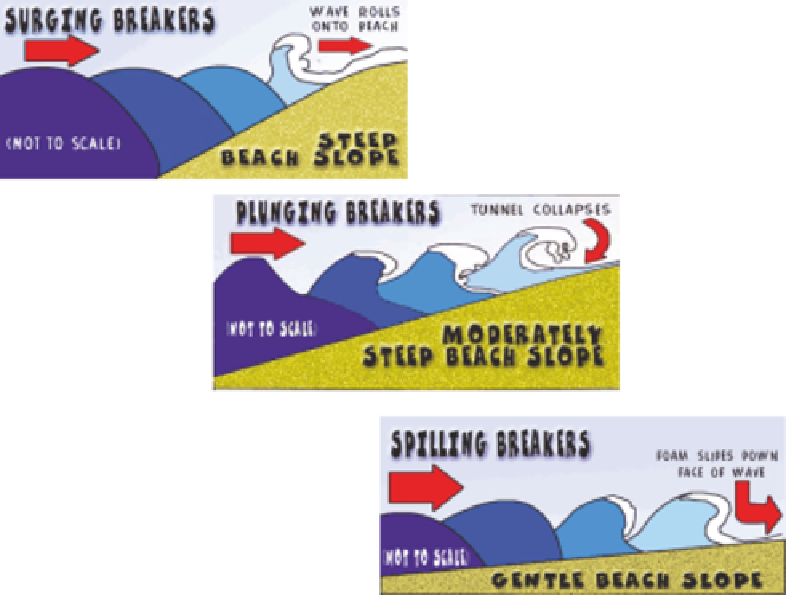Environmental Engineering Reference
In-Depth Information
FIGURE 13.5
Types of breaking waves. (From the Ofice of Naval Research's Science and Technology
Focus Site for Students and Teachers.)
a sustained wind when the wave and current conditions are favorable (Figure 13.6; Leibovic 1983,
cited by Ford and Johnson 1986). Actually, these long vortices develop side by side over the entire
surface of the deeper water but at a slight angle with the wind direction. As shown in Figure 13.6,
the pairs of longitudinal vortices or Langmuir cells form at approximately 15° clockwise from the
path of the wind. The depth of the vortices depends on stratiication and there may be a relationship
with the internal waves formed on the thermocline. Langmuir cells may be deeper over the troughs
of internal waves. Where the counterrotating Langmuir cells converge, visible streaks or bands form
on the surface that tends to accumulate loating debris. In the convergence zone, downward veloci-
ties carry surface waters toward the thermocline. These downward currents move in a circular fash-
ion and turn upward into a divergence zone midway between the Langmuir streaks. The water near
the thermocline may move to a zone nearby, resulting in an upwelling of water typically higher in
nutrients. As irst proposed by Langmuir (1938), this type of large-scale circulation also contributes
to the vertical mixing of the epilimnion.
13.2.4 S
tandInG
w
aVeS
, S
urface
S
eIcHe
One of the more important standing waves is the seiche. A seiche refers to a “sloshing” of water
around some point or node of oscillation. The term
seiche
was coined by the Swiss hydrologist
François-Alphonse Forel, based on his observations of Lake Geneva, Switzerland, where the term
is derived from a French dialect and means “to sway back and forth.” Surface seiches are periodic
oscillations of the water surface resulting from displacements. Displacements are typically caused
by large-scale wind events. They can also be caused by seismic activity or large reservoir withdraw-
als. During hydropower operations or reservoir releases, there is a net low of water toward the dam.

Search WWH ::

Custom Search